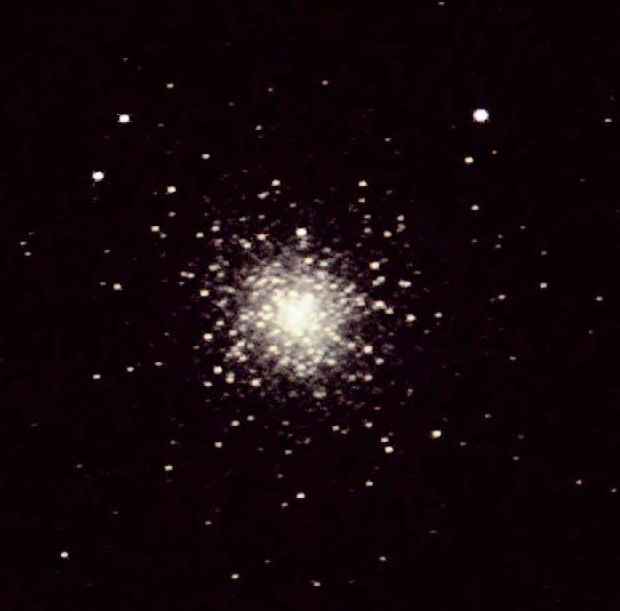DSO of the Month :
Messier 2
AKA: NGC 7089
Position: 21 hrs 33 min 27.0 sec - 0 degrees 49 min 24 sec
Due south at 20:57 (BST) on 15 October 2021
Messier 2
Image: Andrew Relf, HAS member. Used with permission.
The month of October is an excellent time to observe the globular cluster Messier 2. The evenings are getting darker and around 9 pm, M2 is due south and hence at its highest point in the sky. This is important as it is always rather low in the sky, lying in the constellation of Aquarius. At magnitude 6.3 it is bright for a globular cluster, although not bright as the Great Hercules Cluster (M13). I also mention M2 this month because it is currently more or less above Jupiter, which is prominent in the southern sky at present. To find it, draw a line between magnitude 2.9 Beta Aquarii (Sadalsuud) and magnitude 2.4 Epsilon Aquarii (Enif; see the Double Star of the Month for October 2021) and M2 is about a third of the way up this line, roughly level with mag. 2.9 Alpha Aquarii (Sadalmelik) to the left (or East). The apparent size is 16 arcminutes or roughly half a moon width. As it lies an enormous 55,000 light years away, its real size is 175 light years in diameter, which makes it one of the largest globular clusters known. Like many other globular clusters, it is almost as old as the universe, being about 13 billion years old. It is an interloper in the Milky Way, having started life in the so-called Sausage Galaxy (or Gaia-Enceladus-Sausage Galaxy). The Sausage Galaxy was a dwarf galaxy which was captured by the Milky Way about 8 to 11 billion years ago. The remnants of this ex-galaxy were discovered from their motions through the Milky Way which were revealed by the Gaia satellite data in tranche DR2. Its unusual name arises from the plot of its velocity in two directions (radial and azimuthal), which can either be sausage-shaped or burger-shaped. Another globular cluster NGC 2808 may have been the original core of the Sausage Galaxy, but it is not visible from Havering as it is in the southern constellation of Carina.
ARCHIVE
